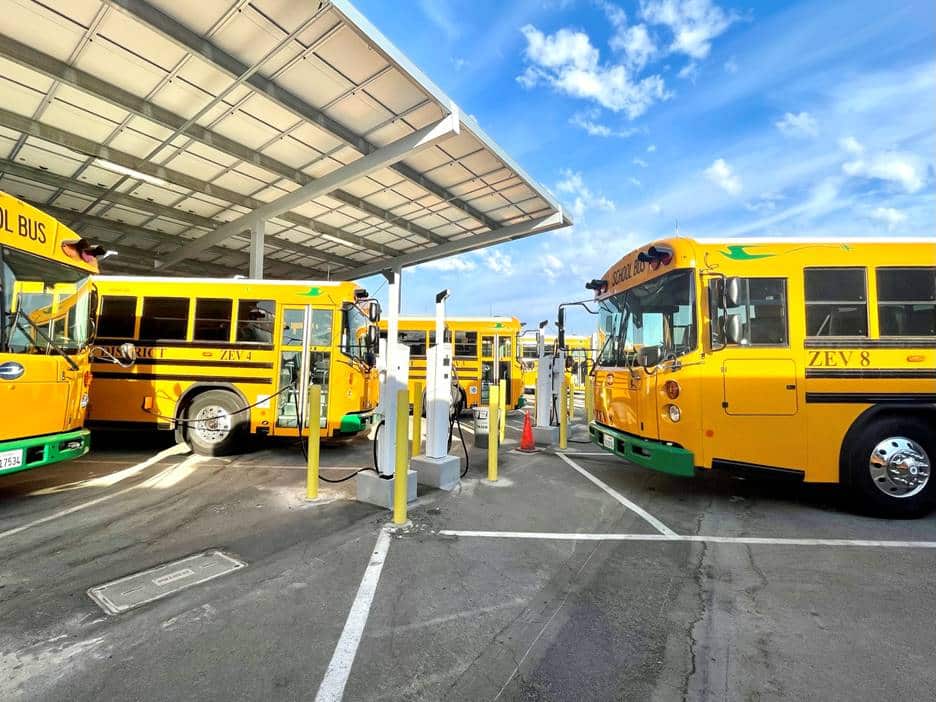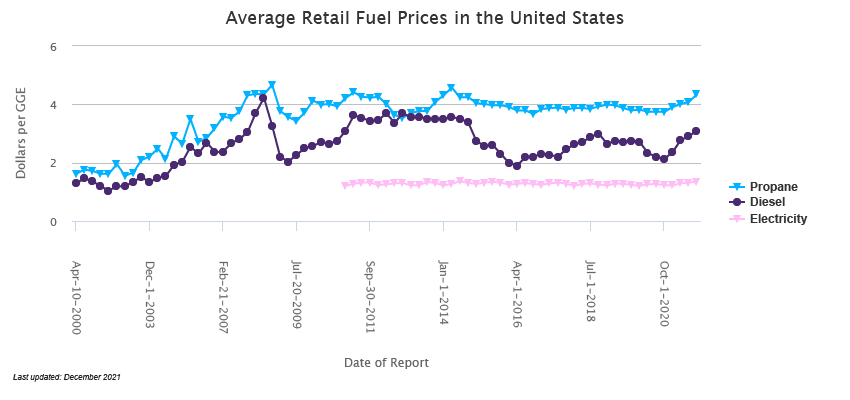Summer is almost upon us, which means the weekday growl of diesel school buses will subside, for now. Imagine: What if the return to classrooms in the fall was much quieter and cleaner? No more roaring engines or smelly exhaust.
In more than 300 school communities across the country, electric school buses are beginning to make that future a reality. Many school districts in the U.S. are recognizing that the switch to electric for the journey to school can tackle several problems at once. Electric school buses are far healthier for kids and drivers, important contributors to climate goals, good for the economy, and can boost reliability on the electric grid, among many other benefits.
School buses represent a huge opportunity for transitioning away from fossil fuels. There are about half a million of them in the U.S., 95% of which run on diesel. Others run on propane.
Fewer than 1% of school buses currently run on increasingly clean electricity from the grid. That’s changing, though.
Making the switch to electric school buses
More school districts, cities, and states are getting on board with electric school buses. For example, in California, the San Joaquin Valley Air Control District, which encompasses eight counties in the Central Valley, recently funded a program to buy 10 buses, while Modesto City Schools made a $14 million purchase of 30 buses, which the bus manufacturer touted as the single largest order (for purchase). Boston plans to replace its entire fleet of more than 700 school buses, and New York State will do the same, requiring all new school bus purchases to be zero-emission by 2027.
-

Modesto City Schools’ electric school buses are parked and charging underneath a solar panel canopy. — Credit: Modesto City Schools
How schools are paying for electric school buses
A variety of models are being used to help schools pay for buses. One big source of bucks: The Environmental Protection Agency (EPA) Clean School Bus Program, which will soon release $5 billion over five years to replace existing school buses with clean and zero-emission models. The program, created through the 2021 Bipartisan Infrastructure Law, is already preparing districts to apply for funding—and it will prioritize areas that have been historically underserved. World Resources Institute (WRI) has a helpful rundown of federal programs and other potential sources of funding here.
Electric school buses tend to cost more upfront than their diesel counterparts, but they don’t have to. Companies like Highland and Thomas Built are offering fleet-as-a-service plans that essentially allow school districts to “subscribe” to fleets that the leasing company owns and maintains. Using this model, Montgomery County’s board of education placed the single largest bus order yet last year, approving a 16-year, $169 million contract to lease 326 buses. CalStart has described other deployment models, such as leasing and turnkey services, that allow school districts to mix-and-match funding, ownership and operations responsibilities with third parties.
Why school districts are getting on board
The switch to electric school bus fleets are helping to reduce greenhouse gas emissions, especially given that transportation is the nation’s largest source of climate-destabilizing pollution. Then there’s the toxicity of diesel, the byproducts of which have been linked with cancer and respiratory illnesses like asthma. There are no safe exposure levels of diesel exhaust to children, especially the youngest and those with respiratory illnesses. Reducing a child’s exposure to diesel emissions is linked to significant improvement in health and cognitive function.
Electric school buses also offer an escape from outsized fuel expenditures.
“The cost of fuel has risen dramatically over the last few weeks — and particularly diesel,” a Modesto school official said in April. “So that was not our intention going in, but we see that as a benefit.”
“The cost of fuel has risen dramatically over the last few weeks, and particularly diesel” — Tim Zearley, Associate Superintendent, Business Services CBO
This chart from the Alternative Fuels Data Center makes it easy to see why. Check out the trend lines for propane, diesel, and electricity over the past decade. Electricity has consistently been the lowest-cost fuel with the least price volatility.
-

Image Credit: U.S. Department of Energy, Alternative Fuels Data Center
With diesel pollution disproportionately impacting communities of color and overburdened neighborhoods, electric school bus plans can also be part of efforts to address longstanding inequities. As this post from WRI notes, 60% of students from low-income families ride the bus to school, and one-third of electric school bus commitments have been made by districts in the country’s top 25% most vulnerable counties, as rated by the Centers for Disease Control and Prevention’s Social Vulnerability Index. However, WRI’s research also found that there is a clear correlation between high median household income and the number of school districts with committed ESBs. The picture of how these commitments actually correlate to income levels in the places that will get these buses is still evolving.
All of these buses will need to be maintained, and some programs also involve retrofits of existing buses. So this is an economic opportunity that creates jobs, a fact Boston Mayor Michelle Wu acknowledged when she mentioned an automotive technology program in the city that would start teaching students electric vehicle maintenance. And bus manufacturer Blue Bird has estimated that converting school buses to electric is a $150 billion opportunity for American manufacturing.
Finally, electric school buses can help bolster the grid by feeding power back to it (a concept known as V2G, for vehicle-to-grid) when they aren’t on the roads.
The bottom line is that electric school buses provide many health, financial, and environmental benefits, and there are a lot of ways school districts can adopt the technology to lead the way in the electric transportation transition.















